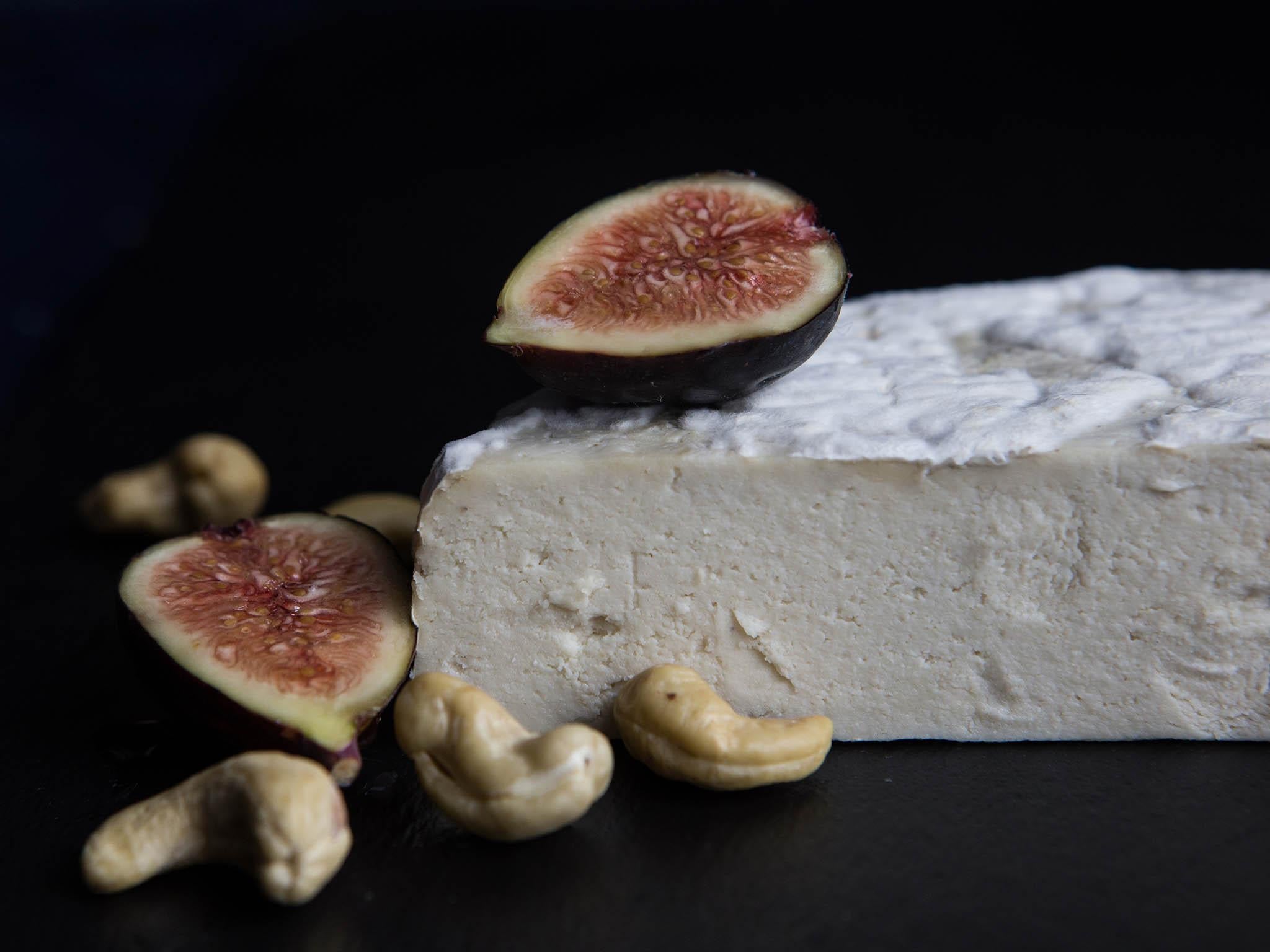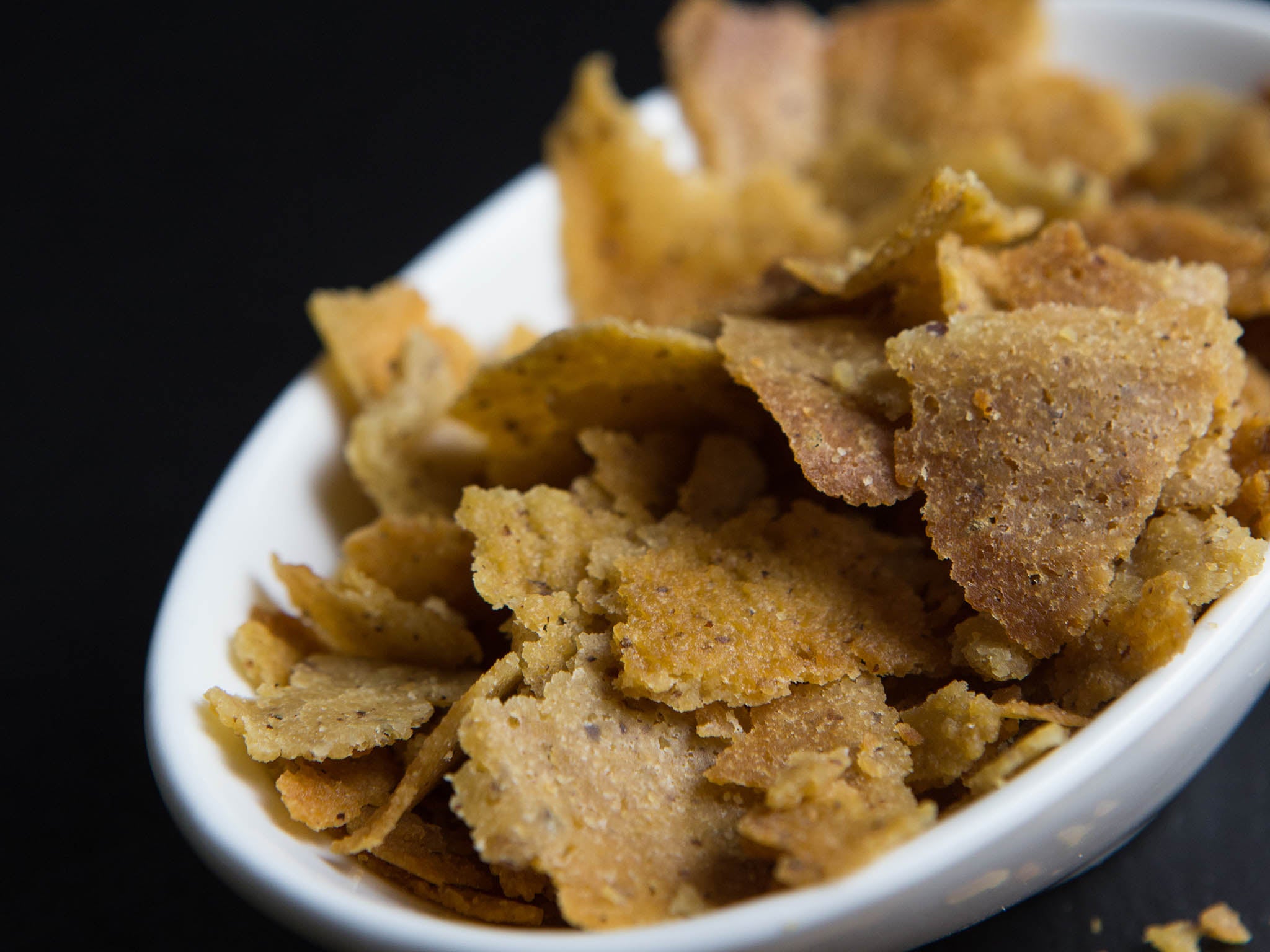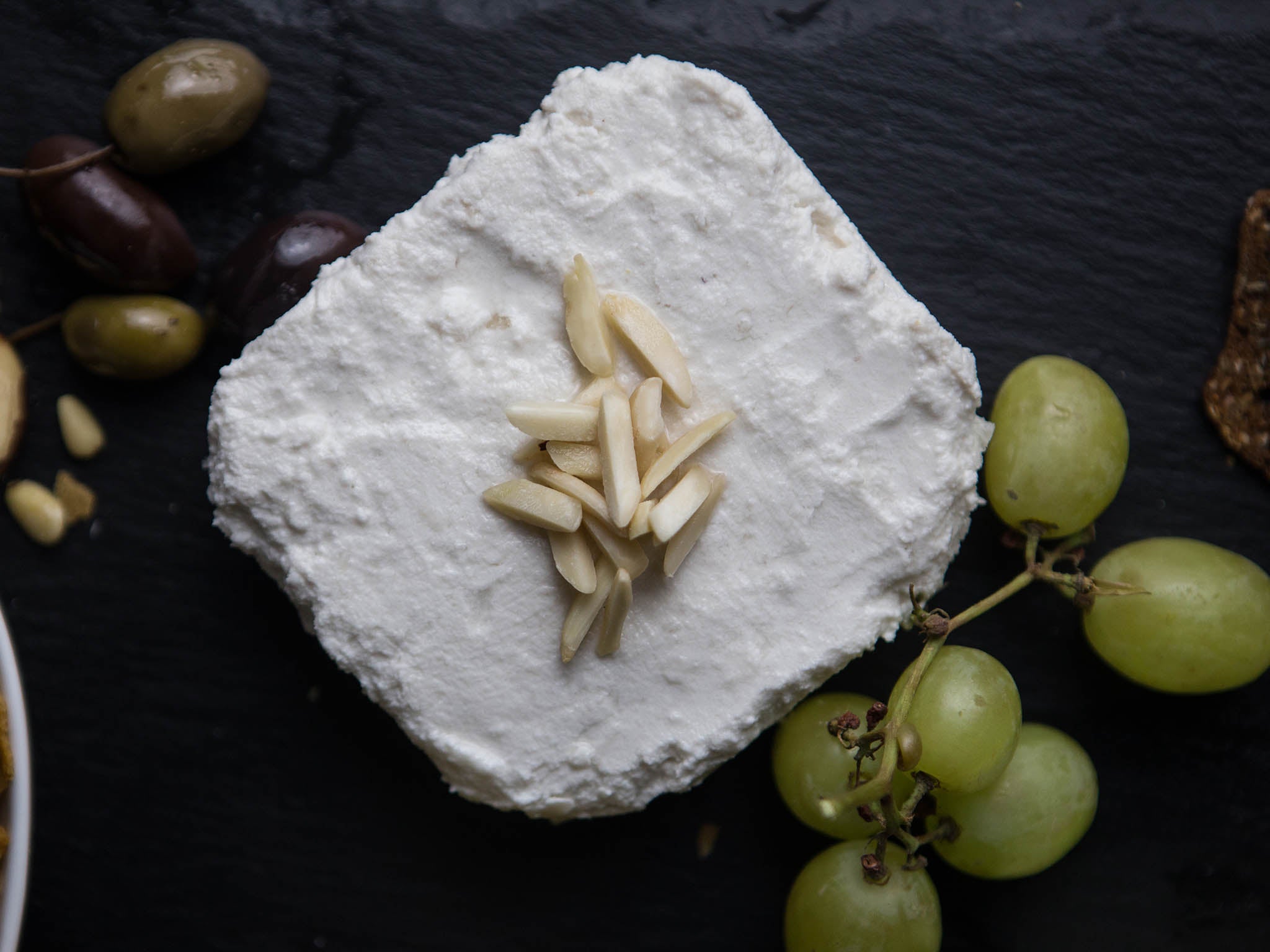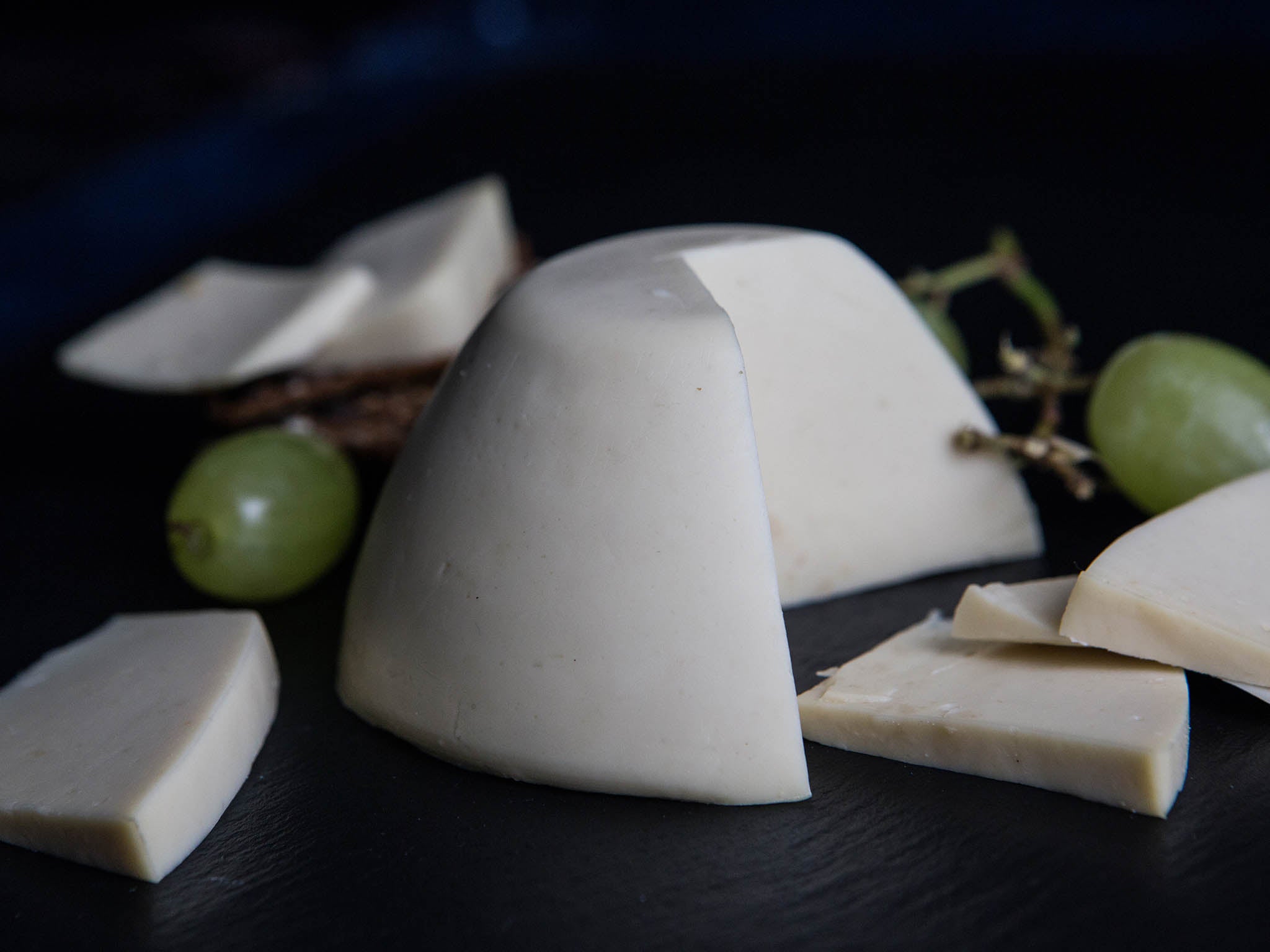Exceedingly good vegan cheeses are not just for vegans
Ahead of World Vegan Day on 1 November, Kristen Hartke looks into dairy-free cheeses which are more flavoursome than ever

For decades, vegan cheese has had a bad rap. It was well deserved. Rubbery and often with an aftertaste compared to pencil erasers or Play-Doh, the plant-based varieties just did not stand up to the real thing. Now, a new generation of vegan chefs and food entrepreneurs has figured out what was missing: fermentation.
Vegan cheese “started out as ‘How can we make something look like cheese?’” says Miyoko Schinner, owner of Miyoko's Kitchen, the artisan vegan cheese company based near San Francisco. “But the problem was that it didn't taste like cheese. Then we realised that we needed to apply actual cheesemaking techniques to develop flavor.”
Crafting vegan cheese using traditional techniques makes sense. It requires patience, just as with dairy-based cheese; the advantage is that a plant-based cheese can take less time to make, but it still requires a few days or even weeks to develop complex flavour. “Vegans want to be able to make cheddar cheese in 15 minutes,” says Schinner. “No omnivore would ever expect to do that.”
Vegans are not the only audience for non-dairy cheeses. There’s a huge portion of humanity – 65 percent – that cannot digest dairy products, says Doron Petersan, a vegan chef and restuarateur based in Washington DC. “So, when you think about it on that level”, she adds, “it doesn't make sense to use animal products to create cheese. The problem is that cheese is so freakin’ delicious, everybody wants to eat it.”
Kale Walch certainly had no intention of becoming a vegan cheesemaker but he started experimenting with recipes about four years ago after being inspired to follow his sister Aubry’s plant-based diet. “I couldn’t stay vegan without a good cheese replacement,” says the Minneapolis resident.

After some trial and error, the siblings decided to take their products – handmade with a base of high-quality soy milk and coconut oil – to their local farmers’ market. They were shocked by the enthusiastic response. A crowdfunding campaign soon led to a private investor and the opening of their brick-and-mortar store, the Herbivorous Butcher, in early 2016. They now make 400 pounds of vegan cheese each week, in eight-pound batches, including dill havarti and pepper Jack, along with plant-based versions of capicola, beer brats and pastrami. The biggest sellers are American and provolone.
“It started out that we were just making the food we were hungry for,” says Walch. “But it turned out that a lot of people were hungry for the same stuff.”
Oddly, around 75 per cent of Walch’s customers are not vegan; instead, they have concerns about factory farming, sustainability and global warming. “It's getting harder to avoid the facts about the environmental impacts,” says Walch. “People are starting to catch on a little bit, and our products are probably the easiest way to bridge the gap.”
Consequently, consumers spent nearly £4m in the plant-based food sector in 2016. And alternative cheeses are the biggest single subcategory.
“A generation ago, this was a lifestyle choice,” according to Neal Barnard, author of The Cheese Trap and president of the Physicians Committee for Responsible Medicine, a vegan research and advocacy not-for-profit based in DC. “But now it's also about the impact on the environment and animal welfare.”
On average consumers take in about 65,000 calories per year from cheese alone, according to Barnard, so his crusade against cheese is hardly surprising. Switching to plant-based versions can have a dramatic effect on reducing some people’s cholesterol levels, but even a vegan cheese can be fatty, relying on nuts and/or coconut oil to provide the right mouthfeel.

“Cheese has a salty, creamy, unctuous quality,” says Schinner, so good vegan cheeses should, as well. “You want them to be able to melt, to enhance the flavor of dishes, to provide that taste-memory.”
The concept of fermentation began to dawn on her some 35 years ago when she was living in Japan and saw a television show about nuns who were changing the flavour profile of tofu by burying it in ash or marinating it in miso. She combined miso, white wine and mirin to create a marinade for tofu, but over the years took the same ingredients and started using them to flavour purees made from nuts. By allowing cashews, almonds and other nuts to ferment at room temperature for a few days mixed with miso and various other ingredients, Schinner found that deeper flavors could be developed – similar to those that might be found in a sharp cheddar or buttery Gouda.
For the home cheesemaker, Schinner’s books Artisan Vegan Cheese and The Homemade Vegan Pantry offer fairly uncomplicated recipes that pay special attention to vegan ingredients that can mimic certain kinds of familiar cheese flavour profiles.
“Cashews are the most neutral,” she says, “like cow’s milk. Goat’s milk is stronger in flavor, so almonds are a good substitute because they develop a funkier flavor when they're fermented.” Brazil nuts turn out to be a surprisingly delicious stand-in for Parmesan, offering up an earthy taste that is also fatty and slightly gritty on the tongue. Schinner suggests using sauerkraut brine as a fermenting liquid for the nuts, which adds a deep saltiness and tang.
Petersan was inspired to start making a vegan version of burrata – balls of fresh mozzarella stuffed with a thickened cream – after participating in a cooking demonstration with Schinner several years ago, who was making her signature buffalo mozzarella using a fermented cashew yogurt as the base.
“I just fell in love with it,” Petersan says. “I started to play around with it, tweaking the recipe, and watched about a million videos on making burrata.” The result, which can be found on the menu at Petersan’s vegan diner, Fare Well, features the same shiny smooth outer shell as its traditional dairy-based cousin, with a satisfying burst of creamy filling. When presented on a bed of peppery arugula with fresh pesto and toasted baguette slices, it’s an almond-cashew burrata that might fool even the most discerning cheesehead.
“There’s this whole psychology of food, and that’s part of what we’re doing,” she says of vegan cheesemakers, “making these foods that are not dairy and presenting them in a way that’s beautiful and palatable and fun and attainable.”

Walch can attest to the psychology, having just spent months working to perfect a plant-based version of cheese curds – those rubbery chunks of curdled milk that are a Midwestern favourite, prized for their characteristic squeak against the teeth.
He knew that his fellow Minnesotans would be expecting that squeak, the sound created when elastic strands of calcium-encased proteins developed during the curdling process rub up against tooth enamel. “We came up with a halloumi cheese by adding a little wheat gluten to make it more solid for grilling,” says Walch. “So it gave us an idea of how we might make the cheese curds. It ended up taking a lot longer to perfect than we thought. It’s hard to get that squeak.”
While the Herbivorous Butcher doesn’t have enough production space and climate control to allow for making aged cheeses, they have incorporated various types of miso, made from fermented beans, to develop different flavors. Scan vegan cheese recipes online, and you will find a range that includes classic blue cheese made with cashews and Penicillium roqueforti, and a Jack-style spread made with cauliflower. Miyoko’s Kitchen is about to move into a new 30,000sq ft facility where Schinner is excited to expand her line with grain- and legume-based cheeses.
“You can make a plant-based product that’s almost identical to a dairy-based cheese using the same process,” says Petersan, “because it’s not about the dairy. It’s more about the science and processes behind it.”
© The Washington Post
Join our commenting forum
Join thought-provoking conversations, follow other Independent readers and see their replies
Comments